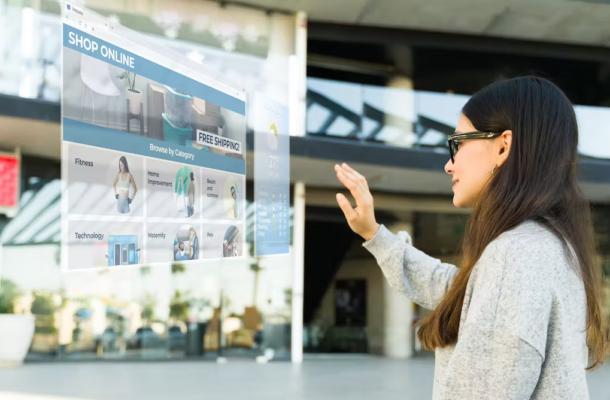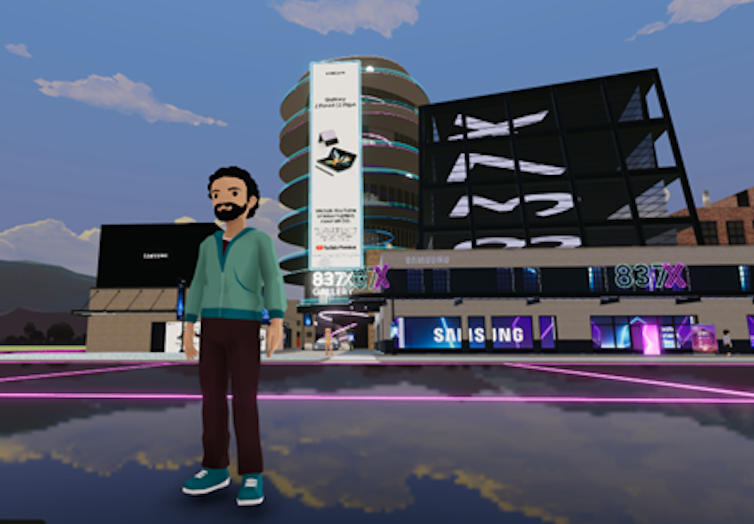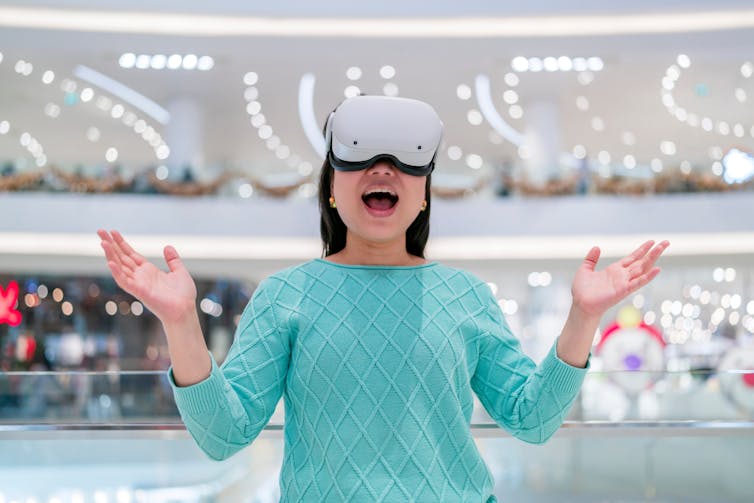Welcome to the Metaverse mall

Since the term was coined, the idea of the metaverse has remained more of a fictional concept than a scientific one. However, with technological advancements in recent years, the metaverse has become more tangible. Much of the recent hype happened after Mark Zuckerberg made the announcement to rename the Facebook brand to Meta. Many retailers have since jumped aboard the metaverse train.

Meta chief executive Mark Zuckerberg announced Facebook’s name change to Meta in 2021. He said the move reflected the company’s interest in broader technological ideas, like the metaverse.
Nike recently filed multiple trademarks allowing them to create and sell Nike shoes and apparel virtually. JP Morgan opened their first virtual bank branch. Samsung recreated their New York City flagship store in the virtual browser-based platform Decentraland, where they are launching new products and creating events.
While many retailers are capitalizing on the metaverse early, there is still uncertainty about whether the metaverse really is the future of retailing or whether it will be a short-lived fad.
Dispelling metaverse myths
Much of that uncertainty around the metaverse stems from confusion about the technology. While examining the top keyword associations related to the metaverse on Google Trends, I found “what is metaverse” and “metaverse meaning” to be the top phrases customers searched for. To alleviate some of this confusion, it’s important to dispel commonly held myths about the metaverse.
Myth 1: You need a VR headset to access the metaverse
While an optimal experience in the metaverse can be achieved through VR headsets, anyone can access the metaverse through their personal computers. For instance, customers can create their avatars and access the metaverse in Decentraland on screen without a VR headset.

Myth 2: The metaverse will replace real-life interactions
Rather than replacing existing modes of communication, the Metaverse provides a more interactive mode of communication. New technologies always bring about predictions of the end of physical interactions. It’s helpful to compare the metaverse with the rise of smartphones. Smartphones enhance communication by allowing people to interact with their social networks, but have not entirely replaced face-to-face interactions. The metaverse will be the same.
Myth 3: The metaverse is just for gaming
While gaming remains the dominant driver of user involvement with the metaverse (97 per cent of gaming executives believe that gaming is the centre of the metaverse today), it’s not the only activity people can take part in.
In a recent survey, McKinsey & Company asked customers what their preferred activity on the metaverse would be in the next five years. Shopping virtually ranked the highest, followed by attending telehealth appointments and virtual synchronous courses.
Keeping expectations realistic
In its current form, the metaverse lacks the technological infrastructure to deliver on market expectations. It may be appropriate to compare the metaverse with the dot-com bubble between 1995 and 2000 that was caused by speculation in internet-based businesses.
Similarly, there appears to be tremendous hype and expectations around what the technology can deliver in its current form. A recent survey of 1,500 consumers found that 51 per cent of people expect customer service to be better in the metaverse, 32 per cent expect less frustration and anxiety while dealing with customer service agents in the metaverse compared to phone interactions, and 27 per cent expect interactions with metaverse virtual avatar assistants to be more effective than online chat-bots.
While such expectations can appear reasonable, metaverse technology is still in its infancy stage, where the focus remains on developing infrastructure and processes for the future. The unrealistic expectations may potentially lead to a metaverse bubble as reality struggles to meet expectations.
Challenges for retailers
As with any emerging technology, retailers need to be prepared for challenges posed by the metaverse. Some of these challenges include the following:
- Data security and privacy: With the novelty of metaverse technology and the wealth of personal data collected, the metaverse will be an attractive target for cyber-hackers. New approaches and methods need to be considered for a safe metaverse that customers can trust.
- Experienced talent: Having the right talent that can create, manage and support experiences in the metaverse needs to be at the forefront of engaging with the technology. However, due to the novelty of the technology, finding such talent will be a challenge.
- Regulations: With no clear jurisdictions and regulations in place, the safety of virtual spaces in the metaverse may be compromised and end up pushing customers away. Retailers need to ensure these spaces are safe and protected.
- Managing customers’ expectations: Retailers need to educate their customers about what can currently be done in the metaverse, and what customers should expect from businesses in the metaverse.
Despite these challenges, retailers will still be able to craft novel shopping experiences in the metaverse — it will just require appropriately skilled and qualified people to make it happen. With appropriate planning and preparation, retailers will be able to meet these challenges head-on.

Opportunities for retailers
As technology improves, the potential uses of the metaverse for retailers will grow. At the moment, the metaverse offers retailers three key opportunities for improving the online shopping experience.
The first is brand exposure. Retailers can expand their presence through virtual billboards and interactive advertisements with less noise, compared to existing online and mobile channels. Cloud Nine, an IT services company, is one of the earliest companies to advertise their services on virtual billboards in Decentraland. Virtual billboard advertising is something marketers should keep in mind.
Secondly, the metaverse offers unique experiences for customers to engage with brands through events, contests, and game-like features. Such experiences could increase loyalty and brand engagement. The Metaverse Fashion Week is an example of how retailers can create unique brand engagement opportunities. Retailers including Tommy Hilfiger, Perry Ellis and Dolce & Gabbana all participated in the pilot experience, leading the wave for immersive and unique customer-brand interactions.
Lastly, the metaverse provides retailers the chance to personalize customer experiences. Similar to how retailers can customize customers’ online experiences through data collection, retailers can tailor customer experiences in the virtual environment. In Meta’s Horizon Worlds, for example, users can create their own virtual worlds, invite friends and customize their own experiences.
This article was published by The Conversation Canada.
Omar H. Fares is a Lecturer at the Ted Rogers School of Retail Management. His interests include consumers’ interaction with novel digital innovations and the impact of digital innovations on retailers.















